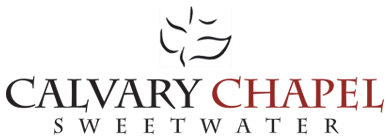Leviticus 4:1-35
Sin Offering
- The provision was for the propitiation of sin.
- Also used to restore ritual purity
- Even unintentional sin needed atoned for.
- The idea is that sin of those who love God.
- There is no atonement for the person who sins defiantly against God.
- 30 'But the person who does anything presumptuously, whether he is native-born or a stranger, that one brings reproach on the Lord, and he shall be cut off from among his people. 31 Because he has despised the word of the Lord, and has broken His commandment, that person shall be completely cut off; his guilt shall be upon him.' " (Numbers 15:30)
- If a priest sins and brings guilt on the people, he is to bring a young bull.
- We see the accountability of the priests, holding them to a high or stricture measure.
- The priest would lay his hand on the bull and kill it at the doorway of the tent of meeting.
- Then the priest would then offer the blood:
- Sprinkled 7 times before the veil of the sanctuary.
- The place where the priests ministered for the people.
- Sin damaged the work.
- Some blood would be put on the horns of altar of incense.
- The altar was the place of prayer.
- Sin damaged the prayer life.
- The remaining blood should be poured out before the brazen altar.
- Even the priest required atonement.
- The imperfect picture of our High Priest Jesus.
- Sprinkled 7 times before the veil of the sanctuary.
- The fat of the bull was to be burned on the alter.
- The rest of it including the hide, head, entrails and refuse were to be taken outside the camp and burned up. (See Hebrews 13:11-13)
- If a priest brought the offering, none of it was eaten. The remainder was destroyed.
- If the congregation of Israel sinned, they were to bring a young bull.
- The bull was offered up in much the same way.
- The elders of the congregation put their hands on the bull's head representing the people.
- The sin offering wasn't to be a meal, it was to get right with God. There could be no good outcome to sin (i.e. I had a good steak and got some good cowhide out of the deal).
- Could this offering be eaten by priests? See note below.
- When a leader sinned, he is to bring a male goat as a sacrifice.
- The goat was sacrificed the same way, with the leader laying his hand on the goat and identifying with the animal that must die for his sin.
- Blood was placed on the horns of the altar and the remaining poured out. The sprinkling of blood 7 times before the veil doesn't show up here.
- Leviticus 6:24-30 allows the rest of the animal was available to the priest.
- When a commoner sinned, they could bring either a female goat or female sheep.
- The female goat or lamb was sacrificed.
- Blood was placed on the horns of the altar and the remaining poured out.
- The fat was removed as it was outlined for the peace offering.
- The remainder of the animal was available to the priest.
Leviticus 6:26 says that the priest offering the sacrifice for the sin offering shall eat it. However, in verse 30 it says:
But no sin offering from which any of the blood is brought into the tabernacle of meeting, to make atonement in the holy place, shall be eaten. It shall be burned in the fire.
- Sin offering of priests: In 4:6-7 we see the priest sprinkling blood before the veil and applying some on the horns of the incense altar. Their offering, then could not be eaten.
- Sin offering of Congregation: In 5:17-18, the priests sprinkle it before the veil and put some on the horns of the incense altar. The meat could not be eaten.
- Sin offering of a ruler: In 5:25, the blood is applied to horns of altar of sacrifice and not used in the tabernacle. Therefore, this meat could be eaten by priests.
- Sin offering of common people: In 5:30, the blood is applied to horns of altar of sacrifice and remainder poured out. It isn't used in tabernacle. Therefore the meat could be eaten by priest.
The sin offering was used:
- During consecration of priests.
- Inauguration of altar worship
- Tribe dedication of the altar
- Consecration of the Levites
- Regular monthly occasions (Num 28:15)
- Annual Festivals (Lev 23:19; Nub 28:22: 29:5; 16-38)
- Day of Atonement (Ex 30:10; Lev 16; Num 29:11)
- Cleansing after childbirth (Lev 12:6-8)
- Cleansing of a leper (Lev 14:19, 22, 31)
- Cleansing from unclean discharges (Lev 15:15,30)
©2022 Calvary Chapel Sweetwater
